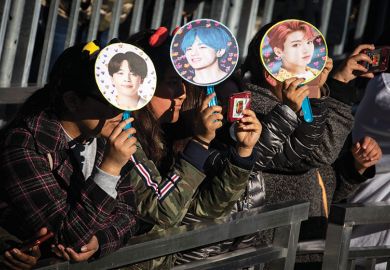You might have seen his photographs without remembering his name. Some feature in landmark publications on modern American photography, such as John Szarkowski's Mirrors and Windows published by the Museum of Modern Art (1978). Others appear in the recent Aperture book on post-independence India (1997). Although he planned collections of his photographs on various themes, William Gedney never quite managed to get a book published in his lifetime. What was it - a combination of pictorial subtlety, bad luck and poor timing or the lack of some ruthlessly competitive edge? One of the most amusing remarks recorded by Gedney in his notebooks is from Szarkowski. He and Gedney were discussing a photographer who seemed to have faded from the scene: "perhaps", Szarkowski suggested, "she was only talented".
Maria Friedlander, wife of one of America's most distinguished photographers, writes in a foreword: "Sometime in the early 1970s Bill Gedney began to visit my husband, Lee Friedlander, and me at our home an hour's drive northwest of New York CityI He plunged into our domesticity - walks in the woods near our house, meals with us and our two children, lots of talk of photographs, travel, music, films, books. The visit over, Bill headed home to Brooklyn and to a life we didn't know much about, the life of a loner, a very private man." When some turn of conversation might threaten that privacy, Gedney would respond with a bellowing laugh. Maria Friedlander realised that the laugh meant that she "had come upon a gate that he kept firmly closed". The relationship changed one day in May 1987 when Bill "calmly told us that he had Aids, full-blown Aids". His friends became a support group until Gedney's death two years later.
Gedney's collection of photographic books was given, at his wish, to a college in Calcutta. His prints, negatives and notebooks were found a good home at the Center for Documentary Studies at Duke University, North Carolina. This book, which assembles photographs and texts in illuminating combinations, was prepared by Margaret Sartor of the centre. Her fine essay is supported by a perceptive piece from Geoff Dyer.
What Was True will be of interest to anyone curious about the mystery of creativity, especially in photography, and to those drawn to the major subjects of Gedney's art: the American city, especially New York, especially at night; rural family life in eastern Kentucky in the 1960s and 1970s; San Francisco in the heyday of hippiedom and the Haight (1966-67); and India, especially Benares (1969-80). Those headings do not get us very far, though, because Gedney's intuition led him to photograph moments when the condition of privacy rises to the surface of life - perhaps involuntarily, but for long enough to register on film. He was not a Diane Arbus - but he made the best photograph of her working that I have seen, and a beautiful remembrance of her in words. Sartor writes of a tension in Gedney's photographs: "the body revealing what the heart might want - and want to hide".
Gedney's attentiveness in waiting for those instants is typified by the series he made from his apartment window, looking onto Myrtle Avenue in Brooklyn. He began the series in 1969 and filled two notebooks with reflections on the subject. His title, "Homage to Myrtle Avenue", acknowledges a famous resident of the street from a century before. There is an impersonal love in these photographs of strangers going about their separated lives, on and under the El, that is reminiscent of Walt Whitman. The notebooks quote Marianne Moore, another famous Brooklyn resident, and the photographs are good enough to bear the claim she makes: "For anyone with 'a passion for actuality' there are times when the camera seems preferable to any other medium."
Gedney was good with words. He wrote about cars in the culture of indigent eastern Kentucky. "Cars - spitting into gathering places - nothing new, always second-hand - constant succession of cars, always breaking down, patched up - dominate verbal conversation - years, memories, dated by car had that year - crashes pointed to on the roads like awardsI" He gets much of this into his photographs, recording also the lean, wiry bodies of the men. Their precarious lives are not so different from those of the hippies he photographed in San Francisco, where he noted "a structure beginning to form - stores, an elite, heroes, musical form, a crust of religion, a graphic style, the codification of dress, uniform."
Both sets of photographs were shown at New York's Museum of Modern Art in 1968. The positive response must have kept Gedney going through his subsequent years, when he photographed much - especially in India - but published and exhibited little. But then, as Dyer says, "This was a major theme in his work: people living out their lives in obscurity."
Mark Haworth-Booth is curator of photographs, Victoria and Albert Museum, London.
What Was True: The Photographs and Notebooks of William Gedney
Editor - Margaret Sartor
ISBN - 0 393 04824 1
Publisher - Norton
Price - £23.00
Pages - 192
